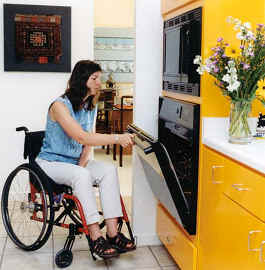I would like to share some more learning: A Japanese speaker talked about
universal design. He asserted that we should equip older persons’ homes with all the universal design features which can help reduce disability and support functioning. Only 2 percent of homes are currently equipped to compensate for functional limitations. What we do instead, he asserted, we tend to send human resources, people, carers, into homes where
adaptation would do. These carers provide no social company, because their job is rushed, timed by the minute.
I asked him if he had ever quantified how many human resources could be put to better use elsewhere, if we adapted peoples’ homes universally? He said he had not, but agreed that we should.
-- Christa Monkhouse


The idea of freeing up the resources, human or otherwise, that are needed because of poor architectural design is appealing. However, I am curious about the degree to which carers are in fact not interacting socially with their patients/clients. If you agree with the idea that in-home hourly workers don't provide social interaction, what are the implications for the current movement toward aging in place programs? If care can be averted because of universal design that's better than needing care prematurely, but I question the assumption that the social benefit of hourly care workers is equal to or less than universally designed kitchens.
ReplyDeleteA very important issue for helping elders grow. Would like to know more about latest in retrofitting existing homes for universal design components.
ReplyDelete